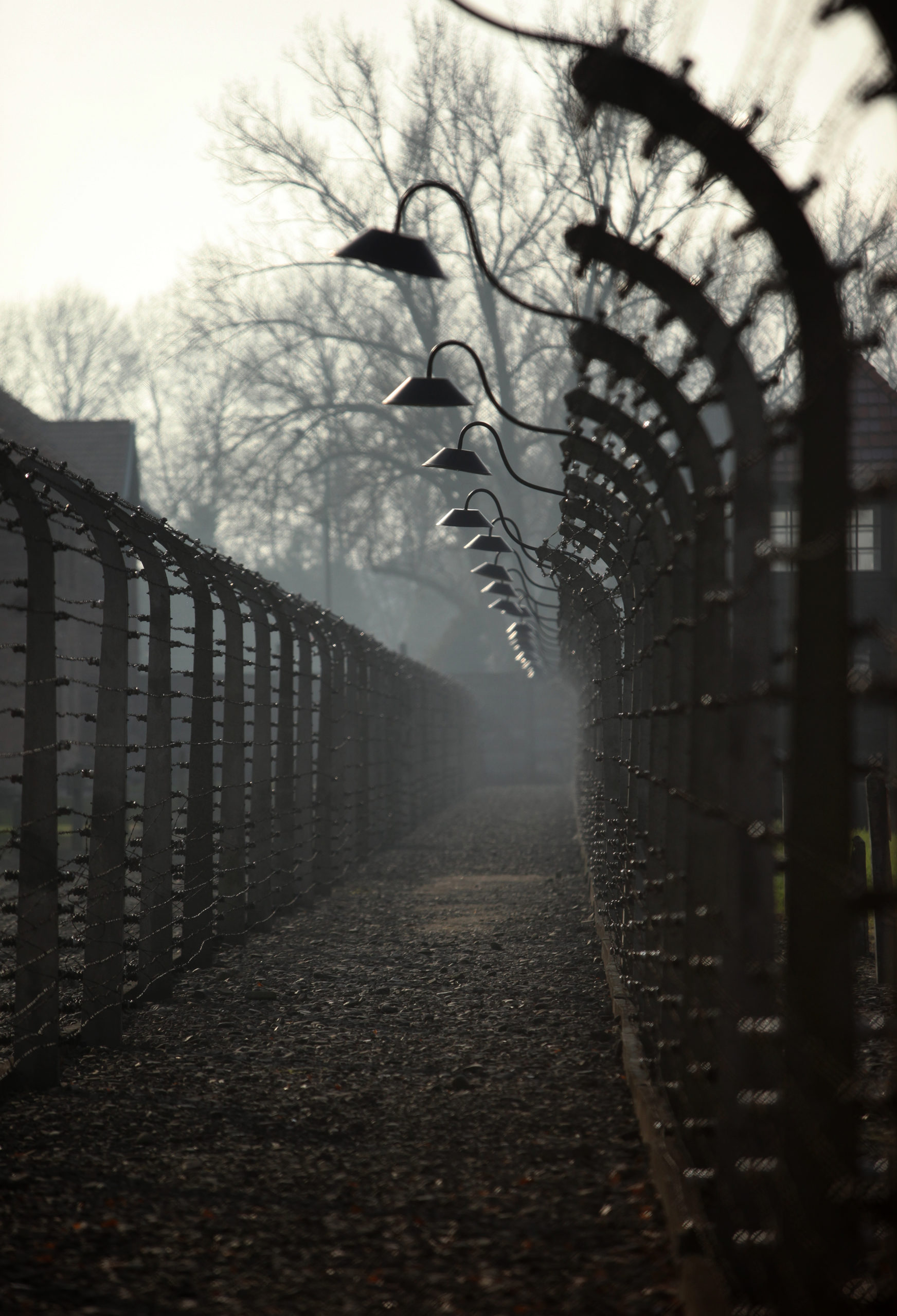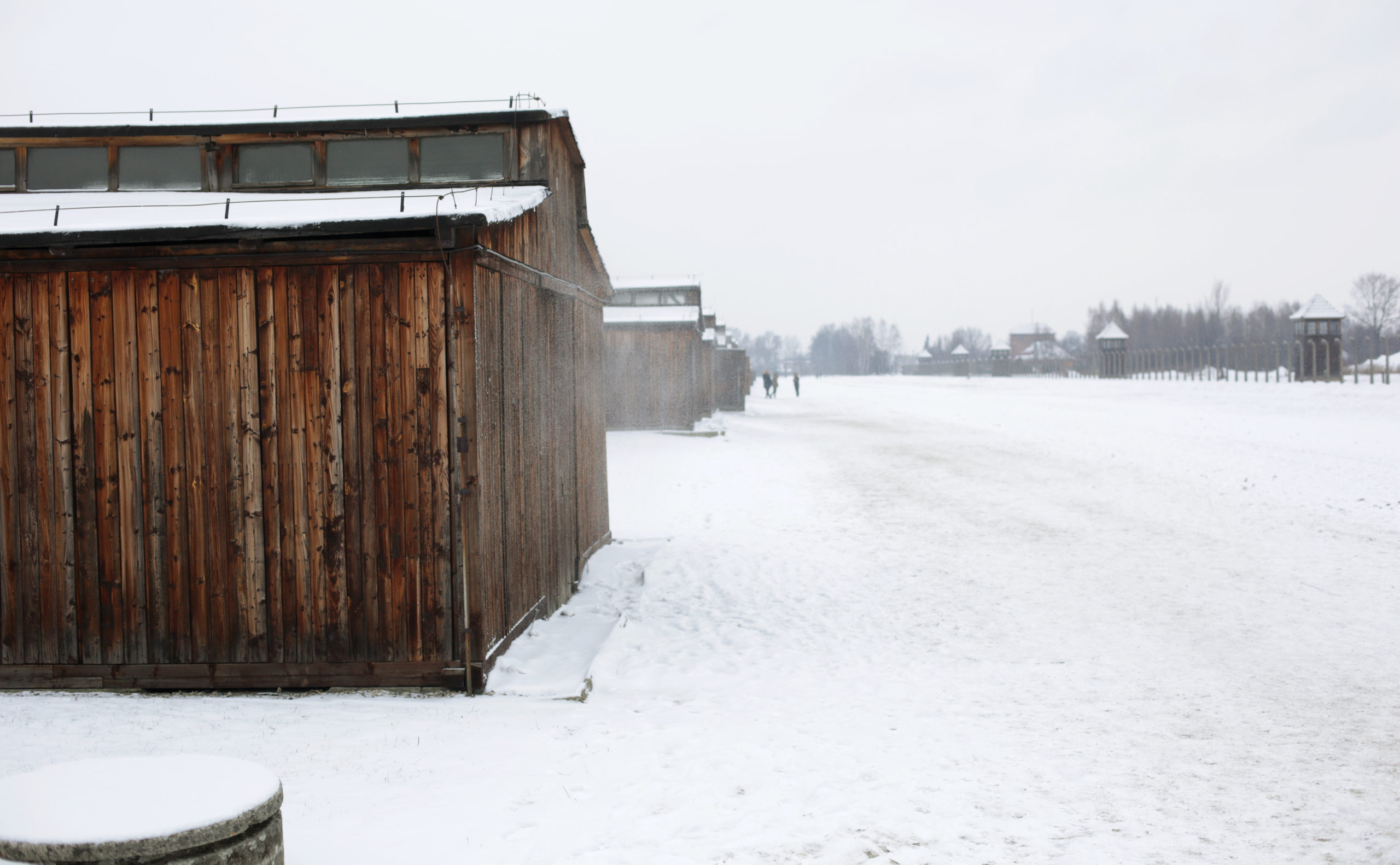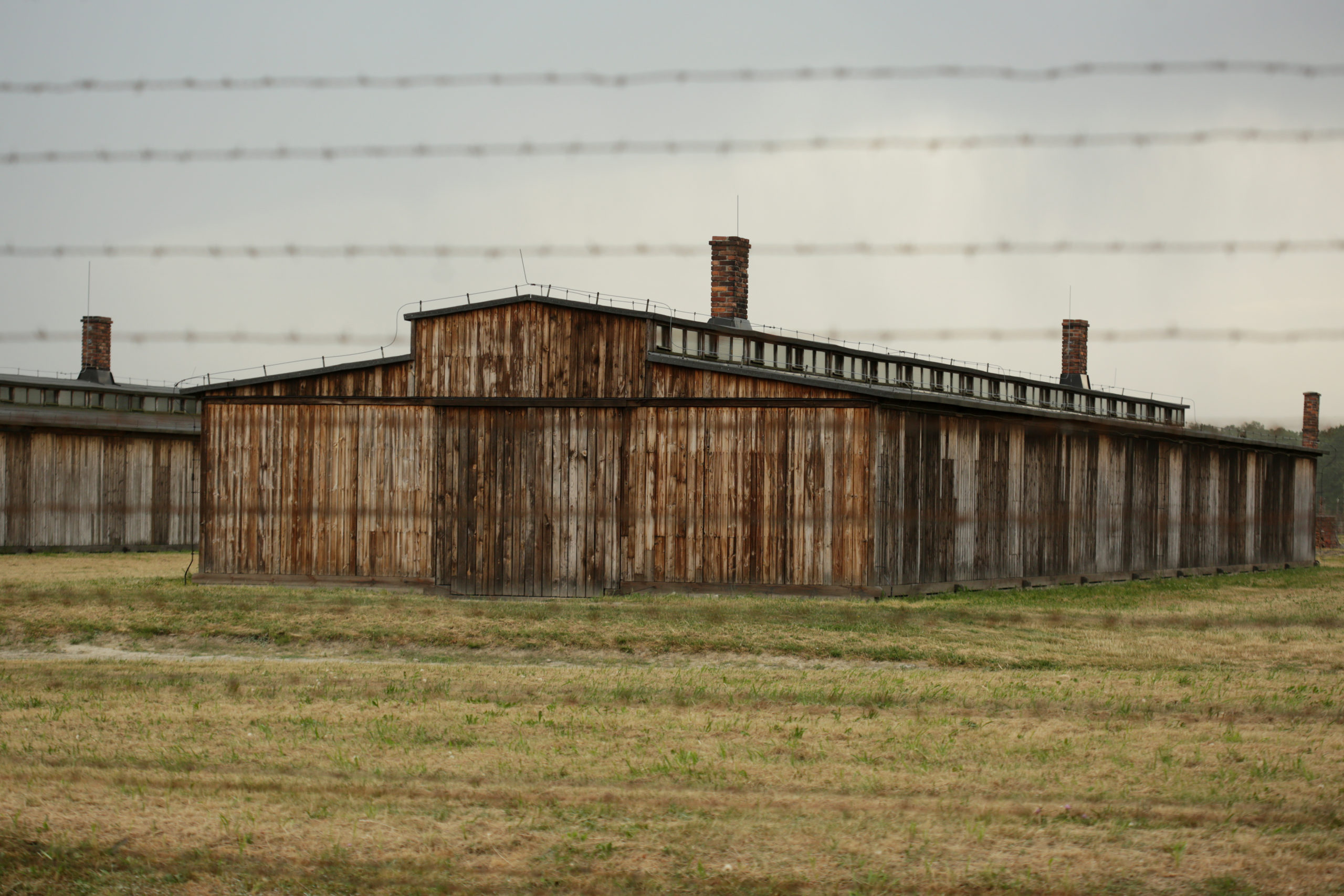photo: Jaroslaw Praszkiewicz
The liquidation of the “Zigeunerlager”
Extract from "The Destruction of European Roma in KL Auschwitz: A guidebook for visitors"
On August 2nd, 1944, 1,408 Roma were brought from Auschwitz I back to Birkenau and made to stand by a freight train waiting at the railroad ramp bordering the Zigeunerfamilienlager on the south. The camp prisoners were allowed to bid farewell to the departing. This situation was intentionally staged to calm those who were to stay and convince them that they too would go to labor camps.
At the end of July 1944, before the Gypsy Camp was cleared, former Wehrmacht members and those fit for labour were segregated. Former Wehrmacht members were allowed to take their wives and children. I was considered fit for labour. On August 2, 1944, 1,400 people–men women and children– were loaded into the cattlecars of a train standing at the ramp in Birkenau. The SS had the clever idea of letting those...who had to stay in the camp see that we were still alive. They were told, “There you can see your relatives, they are going to Hindenburg to build a new camp for you with better barracks and better sanitation.” At four o’clock our transport left Birkenau...The train on which we left Auschwitz-Birkenau was organised like this: women and children to Ravensbrück, those fit for labour to Buchenwald, and Wehrmacht members to Sachsenhausen.
Account by Franz Wirbel, a prisoner of the Zigeunerlager. In: Memorial Book. The Gypsies at Auschwitz-Birkenau. Ed. by Jan Parcer. München-London-New York-Paris 1993, vol. 2, 1536.
On the evening of August 2nd, 1944, after the departure of the transport of Roma and Sinti able to work, the remaining prisoners, mainly women, children and elderly were put on trucks and brought to the gas chambers of crematorium V where they were murdered and their bodies burnt in the pits nearby (because the crematorium was then out of order). Until now it has been accepted that in the night of August 2nd, 1944 2,897 persons were murdered. However, according to the latest research by historians from the State Museum Auschwitz-Birkenau, the number of victims was higher: 4,200—4,300 persons.
A Lagersperre was declared in the Gypsy camp. Into the Gypsy camp came... 50 Jews who worked in the Sonderkommando... The Sonderkommando entered the blocks and drove all the Gypsies out... The Gypsies realized that they were being taken to the gas chambers... However, they could not put up active resistance because the majority of them were old people, women, and children.
Account by Tadeusz Joachimowski, a Polish prisoner of KL Auschwitz, performing the function of a scribe in the Zigeunerlager. APMA-B. Statements, vol. 13, 56-80.
When darkness fell, about eight trucks arrived and pulled up in front of the blocks, and they took the Gypsies away in turn amidst unbelievable screaming, crying and cursing, and drove them to the crematorium. The trucks returned a dozen or more times. Apparently, as I heard, the Gypsies realized what was going on and attacked the SS men, who used their weapons, because shouts and the sound of gunshots reached our ears.
Account by Marian Perski, a Polish prisoner of KL Auschwitz, working in the canteen of the Zigeunerfamilienlager. APMA-B. Statements, vol. 61, 197-200.
We could hear the cracking of the whips, multilingual cursing, sobbing and snarling. From time to time a pistol shot rang out. The defenseless Gypsies were defending themselves, running away between the blocks, and hiding in the barracks. The stubborn ones were beaten and kicked mercilessly. Nor were there any young people among them; they had been transferred earlier to other camps. The majority were defenseless women, children, and the sick.
Account by Józef Piwko, a Polish prisoner of KL Auschwitz. APMA-B. Statements, vol. 46, 21-29.
I was employed in the Gypsy camp until the dissolution of the camp...The entire procedure occurred in the following manner: at 20:30 hours the Gypsy camp was closed, German guards were deployed, German block supervisors armed with clubs were brought in from other blocks, and... trucks drove up, into which the Gypsies were driven with clubs. At about eleven o’clock at night, trucks drove up to the Gypsy hospital, where fifty to sixty Gypsies were loaded into each vehicle, and the doctors were forced to aid in this proceeding under the threat of beating. Enormous cries, simply the howling of the Gypsies, could be heard from the whole Gypsy camp, because they knew what awaited them. Throughout the whole time of this operation, Dr. Mengele was present on the grounds of the Gypsy hospital. Shortly after midnight the operation concluded. Because the entire Gypsy camp had been emptied.
Testimony by Alfred Galewski, Belgian Jewish prisoner of KL Auschwitz, a physician in the Zigeunerlager. APMA-B. Höss Trial, vol. 2, 20-23.
The end of the “Gypsy camp” was not, however, the end of the murder of Roma and Sinti in Auschwitz-Birkenau. On September 26th, 1944, 200 Sinti children were deported from the Buchenwald concentration camp to KL Auschwitz and murdered in gas chambers immediately upon their arrival. And in October 1944, almost 2,000 persons brought from other camps were murdered in the gas chambers, within this number were many Roma and Sinti who earlier had already been prisoners of KL Auschwitz.
Altogether in gas chambers, because of hunger, diseases and the murderous experiments by Dr. Mengele, more than 20,000 Roma and Sinti perished in KL Auschwitz.
Sinti and Roma in Auschwitz

The last stage of the functioning of the ‘Zigeunerlager’ in the Birkenau Camp
Recent research by historians of the Auschwitz Museum

The Destruction of European Roma in KL Auschwitz
A guidebook for visitors

The genesis and course of the Nazi persecution of Roma and Sinti
Extract from “The Destruction of European Roma in KL Auschwitz: A guidebook for visitors”

Block 11
Extract from “The Destruction of European Roma in KL Auschwitz: A guidebook for visitors”

Escapes
Extract from “The Destruction of European Roma in KL Auschwitz: A guidebook for visitors”

“Zigeunerfamilienlager” (“Gypsy family camp”)
Extract from “The Destruction of European Roma in KL Auschwitz: A guidebook for visitors”

Arrival in the “Zigeunerfamilienlager”
Extract from “The Destruction of European Roma in KL Auschwitz: A guidebook for visitors”

The life of Prisoners
Extract from “The Destruction of European Roma in KL Auschwitz: A guidebook for visitors”

Children
Extract from “The Destruction of European Roma in KL Auschwitz: A guidebook for visitors”

Dr. Mengele and experiments on prisoners
Extract from “The Destruction of European Roma in KL Auschwitz: A guidebook for visitors”










